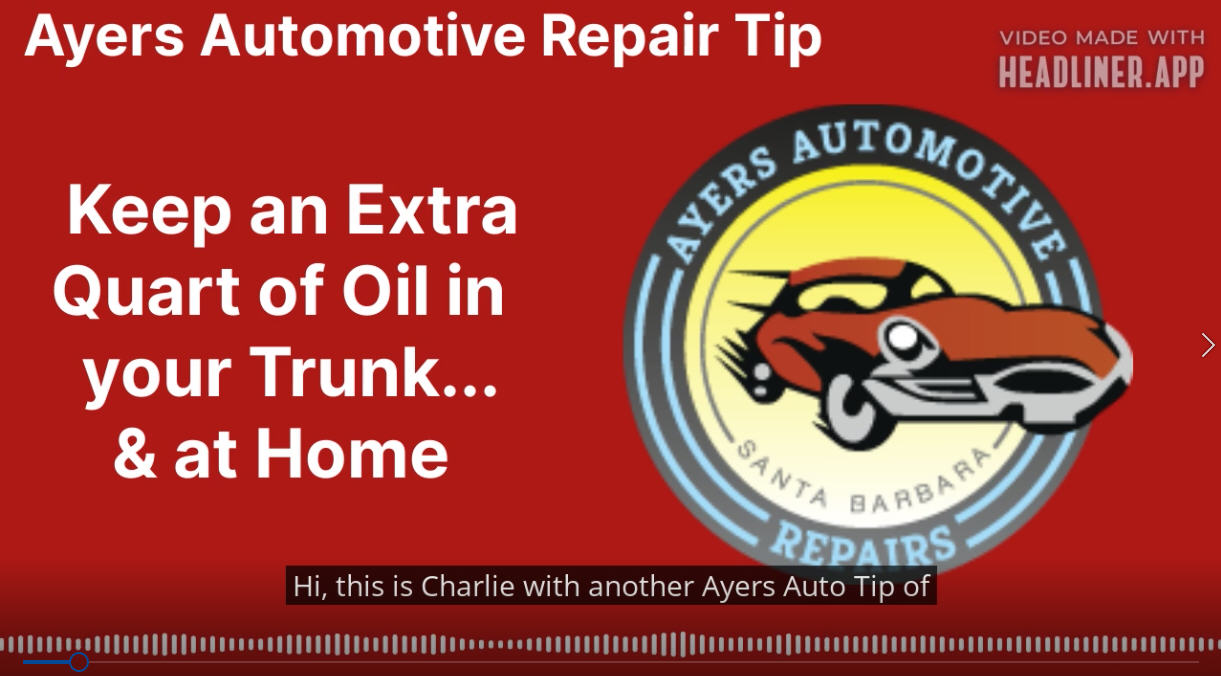
"Oil specifications" for your car's make and model also, Identifying and... https://youtu.be/wy9Y7IuQHZw via
Welcome to this week’s Your Moment of Trust! Asbestos fibers can cause serious health
problems when inhaled. Even brief exposure has been known to cause mesothelioma. If
you live in an older home, you could be at risk. Asbestos repair or removal may be
necessary to protect you and your family’s health.
Here’s what you need to know should you suspect your home has an asbestos problem.
Identifying and removing asbestos
● Know where asbestos is found. Products made today generally do not contain
asbestos and if they do, they are required to be labeled clearly. However, many
building materials used in homes before the 1980s contained asbestos. These
items included pipe and duct insulation or coverings, vinyl sheet flooring and
adhesives for floor tiles, cement sheets and drywall, door gaskets, popcorn
ceilings, textured paints, asbestos cement siding, roofing, and shingles, and
soundproofing materials. In addition, certain older household products like
stove-top pads, ironing board covers, hairdryers, artificial ashes or embers, and
fireproof gloves may contain asbestos. Finally, some antique automobile brake
pads and linings, gaskets, and clutch facings can also contain asbestos.
● Understand when asbestos is dangerous. The Consumer Product Safety
Commission reminds consumers that the mere presence of asbestos in a
building is not necessarily hazardous to your health. Asbestos materials only
pose a threat if they become damaged and begin releasing asbestos fibers into
the air. If there are asbestos materials in your home in good condition, the best
course of action is to simply leave them alone. Check the material frequently for
signs of damage and only act if you notice a problem.
● Know when to test for asbestos. Any sanding, sawing, or breaking materials can
release asbestos fibers into the air. Always test for asbestos if you live in a home
built before 1980 and any of the following is true:
○ You are planning a remodeling project
○ A natural disaster disturbed your home’s structure
○ There are crumbling, worn, or broken building materials in your home that
could possibly contain asbestos
● Hire a professional inspector before planning repairs. Unless it is labeled, you
can’t tell a material contains asbestos just by looking at it. If you find you need to
test for asbestos, hire a trained and accredited asbestos professional to take
samples for analysis and provide you with a written evaluation of the situation.
There is no law against taking samples yourself, but incorrect sampling can
increase the risk of releasing fibers. Asbestos inspectors can advise you on next
steps.
● Hire an asbestos contractor to repair or remove asbestos materials. Once again,
there is no law against repairing or removing asbestos yourself, but to protect
yourself and your family, it’s best to hire a professional. A qualified professional
can handle asbestos abatement without putting anyone at risk.
● Avoid a conflict of interest. Hire inspectors and contractors separately to avoid
any conflict of interest. Use two different companies for these two services if
possible.
● Ensure any asbestos inspectors and contractors you hire have the necessary
qualifications. Make sure both inspectors and contractors have all the applicable
national, state, and local licenses and certifications they need to carry out the
necessary work. For example, in the U.S., only EPA-licensed asbestos
contractors are allowed to handle asbestos at schools and public and commercial
buildings. In Canada, check the CCOHS guidelines.
● Only hire reputable professionals. Ask friends and family members for referrals.
Research asbestos abatement companies thoroughly by reading reviews,
checking their business status on org, and finding out if they’ve been fined or
penalized in the past for any safety violations relating to the handling, removal, or
disposal of asbestos materials.
● Check with your local government for asbestos removal assistance. Local
government agencies may have an asbestos removal assistance program to help
homeowners offset the cost of asbestos removal and disposal. Find out if they do
and if you qualify.
● Get estimates from several companies. Before hiring an asbestos abatement
professional, get estimates from multiple companies, preferably after they’ve
reviewed the inspector’s report. Make sure the estimate includes a plan of action
that details what will be done and how. Compare the costs and services of each
company to make a decision. If one company offers you a drastically lower price
than others, be wary about hiring them.
● Ask plenty of questions. Ask contractors if they have worked on projects similar
to yours in the past, how long the project will take, what kind of protective gear
they use, and how they prevent fibers from being released into the rest of the
house. Find out if you can stay at home during the process and what the cleanup
procedures involve. The answers to these questions will help you choose the
best company. If a contractor gets upset or refuses to answer your questions,
hire someone else.
● Follow your contractor’s instructions. Once you choose a contractor, follow their
instructions on safety to avoid any exposure to asbestos during the abatement
process.
Until next time!

AYERS TIP OF THE WEEK:
Hi, this is Charlie, with another Ayers Auto Tip of the Week. You should check your oil every few hundred miles, or every other time you fill your gas tank. If you’re low, add a little at a time (no more than half a quart to a quart), and then re-check. It’s a good idea to keep at least one quart of oil in your garage and one in your trunk. The oil specifications for your make and model are in your owner’s manual. Or stop by Ayers; we would be happy to check your oil and top it off for free.